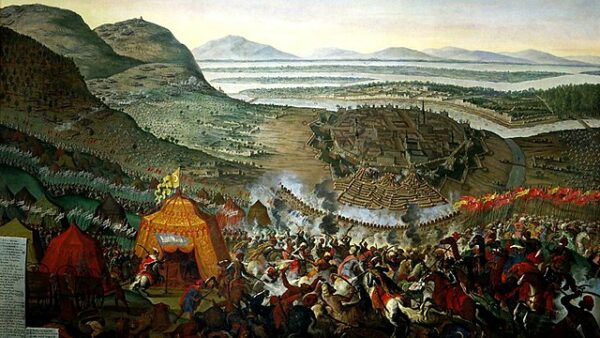In the autumn of 1529, the fate of Christian Europe hung precariously over the walls of Vienna. For nearly a month, the Ottoman army—commanded by Sultan Suleiman the Magnificent, ruler of a vast empire stretching from the gates of Persia to the Balkans—besieged the Habsburg capital, the last major fortress standing between the Turks and the heart of Central Europe. When the siege ended on October 15, the Austrian defenders had not only survived but achieved a triumph that would define the limits of Ottoman expansion for centuries.
Suleiman’s campaign marked the high tide of Ottoman ambition in the West. Having conquered Belgrade in 1521 and crushed the Hungarian army at Mohács in 1526, he now sought to topple the newly crowned Holy Roman Emperor, Charles V, by seizing his brother Archduke Ferdinand’s Austrian domain. Vienna was both symbol and prize—a gateway to the German principalities and a statement of Islamic supremacy. Confident after a string of victories, the Sultan set forth from Constantinople in the spring of 1529 with an army estimated at over 100,000 men, supported by hundreds of heavy guns and a formidable corps of Janissaries.
Yet even as the Ottomans advanced, the campaign was plagued by misfortune. Torrential rains turned the Danube plains into seas of mud, wrecking supply lines and delaying artillery transport. The soldiers, accustomed to warmer climes, suffered in the cold. Many horses perished, wagons broke down, and crucial siege equipment was abandoned along the route. By the time Suleiman reached Vienna’s outskirts in late September, his forces were diminished, weary, and ill-prepared for a prolonged operation so far from their logistical base.
The city he found, moreover, was not the easy target he expected. Though Vienna’s medieval walls were modest by the standards of later fortifications, its defenders were resolute. Under the leadership of Count Niklas von Salm and Wilhelm von Roggendorf, a garrison of some 20,000 soldiers—including local militia, German Landsknechts, and Spanish veterans—hastily reinforced the walls with earthen ramparts and barricades. Civilians joined in the defense, melting church bells for cannonballs and building makeshift barriers in the streets. The mood was grim but defiant: they knew there would be no relief army if they failed.
Beginning on September 27, Ottoman guns opened a relentless bombardment. Janissaries dug trenches toward the bastions and repeatedly stormed the breaches with cries of “Allahu akbar,” only to be met by withering fire and desperate counterattacks. The defenders repelled assault after assault, often fighting hand-to-hand amid the ruins of shattered walls. The Viennese exploited every advantage—rolling burning tar barrels down the slopes, using mines to collapse Ottoman tunnels, and launching night sorties to destroy siege works. By early October, the besiegers had lost thousands, while the defenders’ morale hardened into grim determination.
Suleiman’s final assault came on October 14, when his exhausted troops made one last bid to storm the city. They were repelled with heavy casualties, their ranks torn apart by cannon fire and the defenders’ ferocity. The following day, October 15, Suleiman ordered the retreat. Rain and snow began to fall as his army withdrew in disorder, leaving behind their wounded, their artillery, and a trail of dead across the sodden plains. The once-invincible host limped back toward Hungary, harried by guerrillas and starvation. Only a fraction of the original force returned to Constantinople that winter.
The siege’s outcome was more than a tactical victory for Vienna—it was a turning point in the balance of power between East and West. The Ottoman Empire would remain a formidable threat for another century, but its dream of conquering Central Europe had been checked. The “Gates of Vienna” had held, and with them, Christendom’s frontier.
For the Habsburgs, the defense of 1529 became legend: a moment of providential deliverance celebrated in sermons, chronicles, and art. For Suleiman, it was a sobering reminder that even the mightiest empire has limits.






